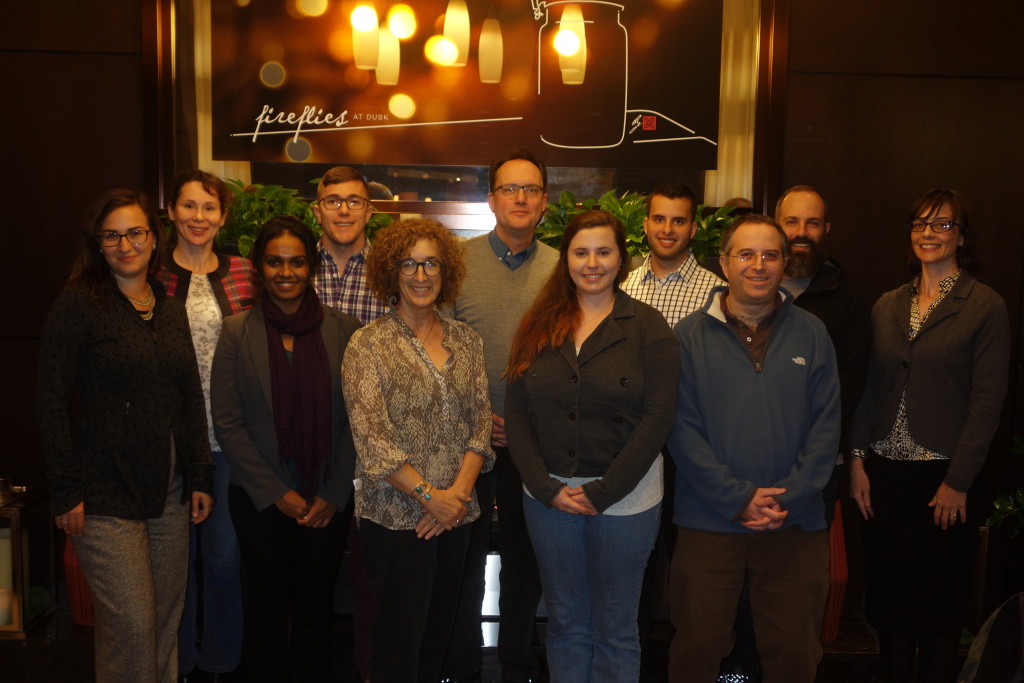Human Generosity Project Members Discuss their Research in Minneapolis, MN
Human Generosity Project researchers met in Minneapolis during the American Anthropological Association conference in November to discuss their findings. The meeting began with a discussion about how the project’s multidisciplinary approach that includes modeling, field work, and laboratory experiments is uniquely suited for investigating resource transfers in humans.
This initial conversation was followed by field-site reports by each of the field-site supervisors. Project director and Malpai field site supervisor Lee Cronk1, Fiji field site supervisor Matthew Gervais1,2 Ik field-site supervisor Cathryn Townsend1, and Karimojong field site supervisor Padmini Iyer1 summarized the findings from each of their respective field sites. Then, Dennis Sonkoi1 joined the meeting through Skype to discuss his research with the group of people that inspired the origins of the Human Generosity Project: The Maasai of Kenya. Kijenge field-site supervisor Brighid Mccarthy1 and Hadza field site supervisor Collette Berbesque3 also participated in the conversations through Skype. A general theme across the field site reports was the combination of qualitative and quantitative methodologies to learn about how people in each society manage risk and engage in transfers of resources with each other.
After the field-site reports, the group learned about the progress of the laboratory experiments conducted at Arizona State University. First, Helen Wasielewski2 presented the initial results of the risk-pooling experiment, which was inspired by Maasai cattle transfers. After the risk-pooling experiment, Andres Munoz2 presented the results of the Wason selection experiment, as well as a new design for an experiment to study stinginess and greediness detection. Additionally, Munoz talked about plans to write a review on the concept of reciprocity. The day concluded with Daniel Sznycer2 reviewing his progress on developing a new scale for measuring perceived fitness interdependence.
The second day of the Human Generosity Project meeting began with project director Athena Aktipis2 and Marco Campenni2 discussing their research involving agent-based modeling. In these models, computer agents are programmed to follow different rules and the performance of the rules is compared after a predetermined number of rounds. Following the modeling results, Jessica Ayers2 presented her research plan to study the dissolution of same-sex friendships from an evolutionary perspective. The team of researchers agreed that research on friendship dissolution is an exciting addition to the project that will provide new insights into the interplay between cooperation and conflict in humans.
The Human Generosity Project meeting in Minneapolis came to an end with a lively discussion led by Pamela Winfrey2. Winfrey presented different ways in which art has been used as a means of communicating science to the general public. The team also discussed ongoing collaborations with the Exploratorium in San Francisco to communicate about need-based transfers to the public through a new exhibit called “The Survival Game.” As the meeting came to an end, the Human Generosity Project team was eager to continue both their research and outreach efforts and to bridge the gap between disciplines to explore human sociality.
Affiliations
1Rutgers University
2Arizona State University
3University of Roehampton
SHARE THIS PAGE:

